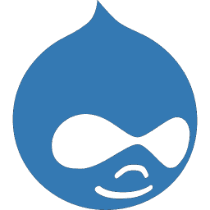Acelere WordPress: tecnología probada
- JavaScript
Fusionar, Compresión, Carga diferida - CSS
Optimización de carga y compresión de tamaño - Imagenes
Compresión y conversión con CDN OptiPic - Widgets de terceros
Consultores online, chats, redes sociales, etc.. - Sistemas analíticos
Google Analytics, Facebook,
Qué problemas y recomendaciones de Google Pagespeed Insights se mejorarán
Minimize main-thread work
Consider reducing the time spent parsing, compiling and executing JS. You may find delivering smaller JS payloads helps with this.
Eliminate render-blocking resources
Resources are blocking the first paint of your page. Consider delivering critical JS/CSS inline and deferring all non-critical JS/styles.
Reduce unused JavaScript
Reduce unused JavaScript and defer loading scripts until they are required to decrease bytes consumed by network activity.
Reduce unused CSS
Reduce unused rules from stylesheets and defer CSS not used for above-the-fold content to decrease bytes consumed by network activity.
Ensure text remains visible during webfont load
Leverage the font-display CSS feature to ensure text is user-visible while webfonts are loading.
Reduce the impact of third-party code
Third-party code can significantly impact load performance. Limit the number of redundant third-party providers and try to load third-party code after your page has primarily finished loading.
Serve static assets with an efficient cache policy
A long cache lifetime can speed up repeat visits to your page.
Reduce JavaScript execution time
Consider reducing the time spent parsing, compiling, and executing JS. You may find delivering smaller JS payloads helps with this.
Efficiently encode images
Optimized images load faster and consume less cellular data.
Serve images in next-gen formats
Image formats like WebP and AVIF often provide better compression than PNG or JPEG, which means faster downloads and less data consumption.
Verifica la velocidad WordPress - ingresa tu sitio
Cómo conectarse Pagespeed OptiPic para WordPress
Orden de implementación de tecnología OptiPic: Pagespeed
Espere la implementación de la prueba por parte del equipo de OptiPic
Financie su cuenta seleccionando el paquete apropiado
Precios: implementación + Suscripción
Pago único por implementación. Pago mensual por suscripción.
Включая ускорение бекенда, TTFB, время ответа сервере, время до первого байта
Cómo aumentar la velocidad de WordPress en el lado del front-end (aceleración del cliente)
Además de comprimir las imágenes de aceleración WordPress en el lado del front-end, también se puede lograr optimizando otros componentes:
- Almacenamiento en caché de archivos estáticos en el lado del servidor (imágenes, css, js).
- Combinando css.
- Compresión css.
- Unirse a js.
- Compresión js.
- Transferencia de css y js a la parte inferior de la página de código html.
- Desactivar scripts y widgets innecesarios.
Acelerando la descarga de WordPress en el back-end (aceleración del lado del servidor)
La aceleración en el lado del servidor es una meta para minimizar el tiempo que el servidor genera la página. Esto generalmente es promovido por los siguientes métodos:
- Cambie el alojamiento o servidor a uno más poderoso.
- Optimización de la configuración del servidor web (apache, nginx, php-fpm).
- Optimizar la configuración de mysql (u otro subsitio que usa el sitio).
- Caché de consultas de bases de datos.
- Almacenamiento en caché de solicitudes a API de terceros.
- Almacenamiento en caché de todo lo que es posible (tecnología "Sitio compuesto" y similares).
- Refactorización y optimización de la lógica del código php.
Los especialistas de OptiPic conocen todas las sutilezas de la aceleración y están preparados para abordar la compleja aceleración de su sitio web. Contáctenos si necesita la máxima aceleración de su sitio.

 Shop-Script
Shop-Script  Drupal
Drupal  OpenCart
OpenCart  Yii
Yii  FuelPHP
FuelPHP  Zend Framework
Zend Framework